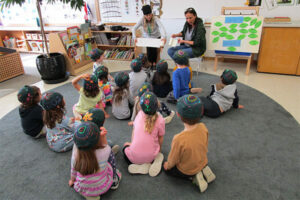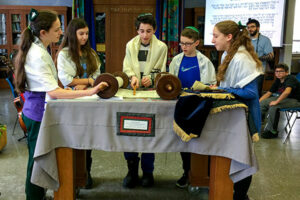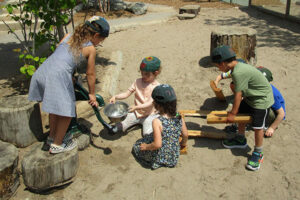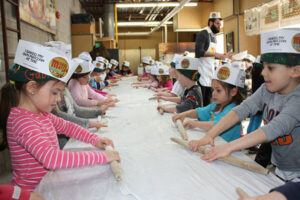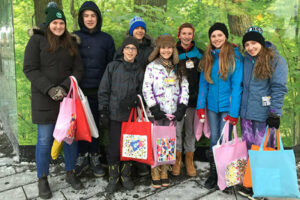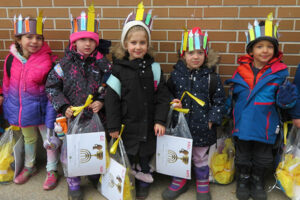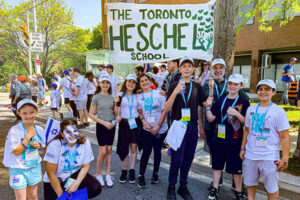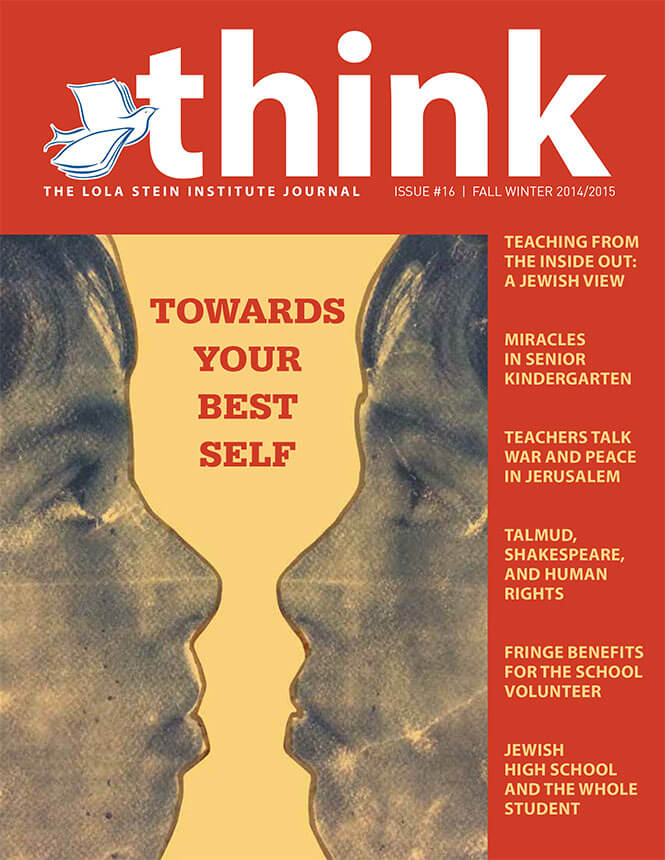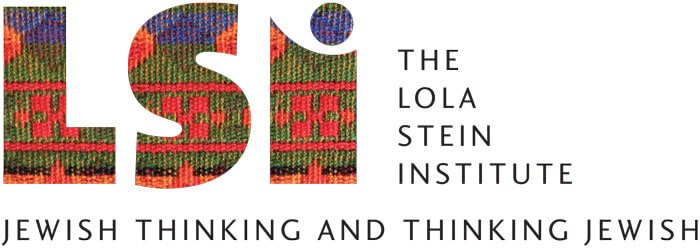- How We Teach

- First Column
- Second Column
- Third Column
- Case Studies

- First Column
- Second Column
- Culture & Community

- First Column
- Second Column
- News & Views

- Admissions

- First Column
- Second Column
- Support Us

- About

- First Column
- Second Column
- Parent Hub
- Attend an Open House
- Take a Tour
- Donate Now
- Calendar
- Blog
- 416-635-1876
- Search
The Fringe Benefits of Volunteering at School
When I began to help out at my children’s school, I did it for the obvious reasons. I wanted to contribute to the success of the school and, on a purely personal level, I hoped to find the volunteer work fulfilling and stimulating. Over time, and without any expectation, I began to see that something else was emerging; it seemed my children were experiencing some very positive fringe benefits from my volunteer involvement at their school.
I initially signed up for the Chevra Committee. Chevra is the Hebrew word for a collection or group of friends, and our committee’s mandate was to build our school community. Our chevra events were to foster the village that raises our children. I enjoyed the social and creative aspects of planning. I liked attending the events and was gratified to see our school community’s warmth and cohesion growing. The events strengthened the community, and the community strengthened the school. What I didn’t notice at first was that my role in planning the events delivered the biggest bang for the bucks to my own children.
By devoting my time and attention to their school, I was sending my children the message that what they do all day matters to me; and, by extension, that they matter. I noticed their growing interest in the details of events that I was planning, how they asked logistical questions and wanted to share their ideas about the challenges that arise when preparing an event or working with a committee. It became clear that through my participation and their engagement with me, my children were developing a new sense of ownership of their school. Their “buy-in” translated into speaking about their school with pride and to offering enthusiastically to help out at various school events.
As my children became accustomed to committee meetings held in our home and acclimatized to seemingly endless deliberations about future school events, they learned the “language” of volunteer- ism. They learned that volunteers can brainstorm, work collaboratively, and pitch in; and the conversations continued in our house long after the meetings ended.
The kids could see that this kind of community support was some- thing that their parents took seriously. It was happening in their very own home and at their school. The language of the volunteer became second nature to my children: to speak up, offer your time, and participate, just like this mom and that dad and that mom and this dad. Whether over a meal or just on the fly, we would talk about what was on the Chevra Committee’s agenda and they would jump to help out again and again. I could ask, “Can you make me a sign to advertise Havdalah On Ice?” or “What kind of social action project might the Grade 8’s like to organize for Mitzvah Day?” or “Can you find five students to make waffles for Breakfast in the Sukkah?” It was what we did.
They also saw the rewards of volunteering first hand. One exam was a new chevra event that they watched from conception to conclusion – Toronto Heschel’s Teacher Appreciation Week. The Chevra Committee sent out a request for quotes from students about their teachers, and my children eagerly read and commented on the emails that flooded into my computer. They helped us as we cut out colourful boxed quotes and made a beautiful montage that greeted the teachers as they arrived at school on Monday morning. My kids felt like insiders – as gratified as proud parents – when they saw the delighted and surprised reactions of teachers and students alike. And later, as their teachers received surprise afternoon deliveries of healthy smoothies, my kids were happy to know that their mom was on the committee behind the excitement. Observing an event from beginning to end taught my kids that volunteering was rewarding, and that it was fun.
In later years, when I began to serve as a member of the school’s board of directors, my children’s vantage point and questions changed. Why are you going again, Mom? What does the board do? What do you talk about when you’re there? Will you request that my friend, so- and so, is in my class next year? A new conversation had begun; my kids’ “inside view” was now a perspective on the existence of an adult enterprise that acted on their behalf even if they could not share in it. They knew it must be something important if I let it take me out late into dark winter nights.
They began to understand that there are many levels of thinkers and leaders and volunteers devoting time, interest, and expertise to their school. It was enlightening for them to realize that so many people were working so hard to make their days meaningful and stimulating. It widened their point of view and helped them appreciate a world beyond themselves. Now, when discussions and dilemmas arise for them at school or elsewhere, I think there is a deliberate pause in the conversation so that my kids can consider the other side to the story. The world is not always exactly as it seems; things are complicated.
My volunteer work in the intimate community that is our school has immersed my children in the world of community action and introduced them to the language and lifestyle of volunteerism. It has also engaged my kids more intensely with their school, its principles and our community’s values; they see our family working together and our community collaborating as well. My kids are proud of me. To me, this is the best proof that what I do matters. It is the most unexpected of results from getting involved, and, I admit, it’s one of my favourites.
PREVIOUS ARTICLE
Life Lessons and the Art of PortraitureNEXT ARTICLE
Saving and Sharing All Day LongSpecial Feature
Democracy and Justice in the Junior High ClassroomBeyond Social Media ActivismOur Sages Tell Us
Cultivating Kindness at Home and at SchoolSaving and Sharing All Day LongColumns
Perspectives
 The Lola Stein Institute (LSI) is a centre of inventive educational thinking and addresses the challenge to re-frame schooling for the exigencies of our times.
The Lola Stein Institute (LSI) is a centre of inventive educational thinking and addresses the challenge to re-frame schooling for the exigencies of our times.

